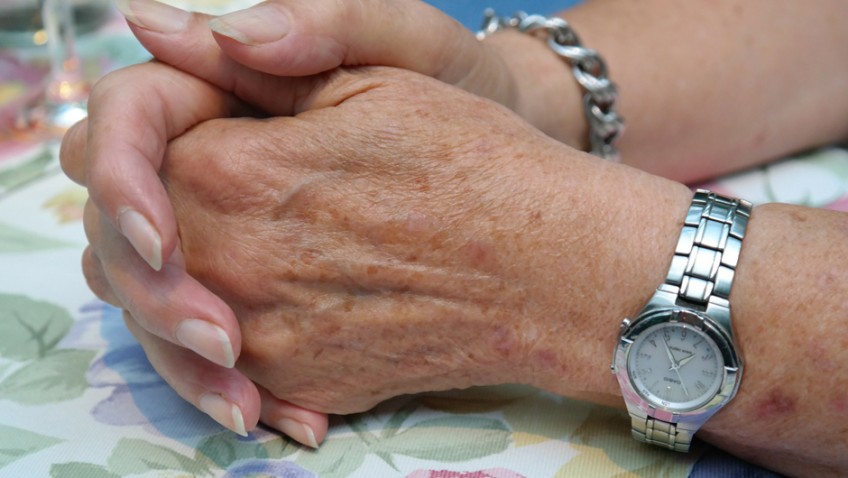Older people for the deadly skin cancer melanoma are more likely to see it spread and not respond to treatment, a new study found.
The risk of cancer increases with age as accumulated damage to cells and chronic inflammation occur over time.
New research has shown aged tumour cells in melanoma behave differently than younger tumour cells.
Changes in the cell’s microenvironment make these older tumour cells more metastatic and more resistant to treatment with targeted therapies.
Instead scientists suggest antioxidants could serve as a better treatment strategy for older patients with melanoma.
Melanoma is the deadliest form of skin cancer, and patients with advanced cases of the disease only have a 20 per cent chance of surviving five years after their diagnosis.
Multiple targeted therapies have been approved in the last few years, but patients who receive these drugs eventually relapse and become resistant to these treatment options.
For the first time scientists at The Wistar Institute has pinpointed age-related changes that occur in the microenvironment of tumour cells.
Cells found in the skin called dermal fibroblasts help the skin recovery from injuries, and can contribute to the growth and invasion of melanoma cells.
Associate professor Dr Ashani Weeraratna said: “It’s fascinating to see that the microenvironment can have such a profound effect on both metastasis, and response to a therapy that is specifically targeted to a mutation in a gene.
“This tells us that no tumour is an island, and even therapies targeted against these driver mutations are affected by the way the tumour cell communicates with its microenvironment.”
The study used dermal fibroblasts from healthy donors aged 25 to 35 or from donors aged 55 to 65 to understand what factors contribute to the difference in melanoma progression in ageing cell populations.
It was found that a secreted factor sFRP2 was present in ageing cells.
SFRP2 regulates another protein called β-catenin that normally blocks the invasion of melanoma cells.
In addition, β-catenin loss has been shown to promote oxidative stress in some cell types.
In an aged microenvironment, there are fewer scavengers of free oxygen radicals, leading to more activity of reactive oxygen species (ROS).
At the same time, the age-induced loss of beta-catenin renders melanoma cells less capable of dealing with ROS, resulting in a genetically unstable tumour.
Treatment resistance experienced by older melanoma patients was found with increased activity of ROS and decreased levels of β-catenin all contribute to increased resistance to treatment with drugs that inhibit a gene, BRAF, mutated in approximately half of all cases of melanoma.
Yet antioxidants might be a more effective strategy for treating older melanoma patients.
An antioxidant called N-acetylcysteine (NAC) killed melanoma cells in aged dermal fibroblasts.
Graduate student Amanpreet Kaur added: “Our findings highlight how vital it is to treat that melanoma in an age-appropriate manner,.
“With other studies confirming the effectiveness of anti-oxidants in treating BRAF-mutated cancers, we have more evidence of how an older population may benefit from new therapeutic strategies.”
The study was published in the journal Nature.
By Tony Whitfield





